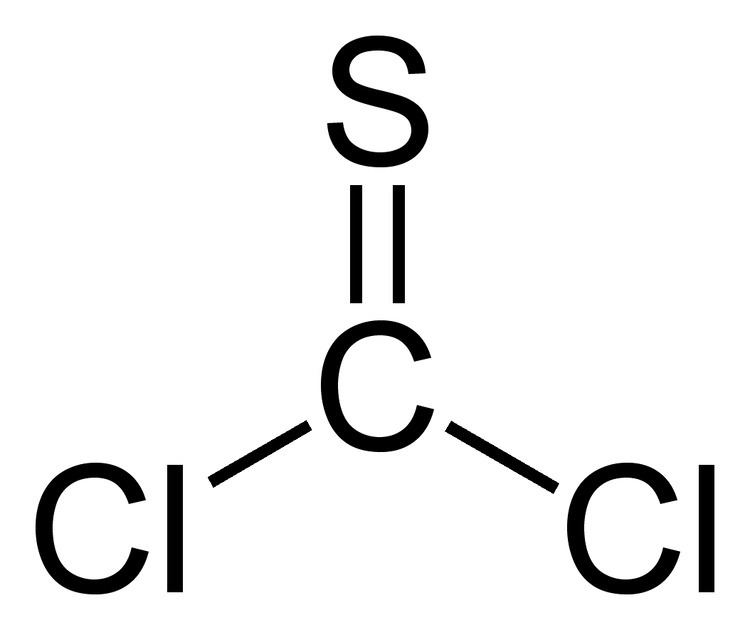Formula CSCl2 Boiling point 73 °C Appearance Red liquid | Density 1.5 g/cm³ Molar mass 114.98 g/mol Pubchem 10040 | |
 | ||
Related compounds | ||
How to say thiophosgene high quality voices
Thiophosgene is a red liquid with the formula CSCl2. It is a molecule with trigonal planar geometry. There are two reactive C–Cl bonds that allow it to be used in diverse organic syntheses.
Contents
- How to say thiophosgene high quality voices
- How to pronounce thiophosgene
- Preparation of CSCl2
- Uses of CSCl2
- Safety considerations
- References
How to pronounce thiophosgene
Preparation of CSCl2
CSCl2 is prepared in a two-step process from carbon disulfide. In the first step, carbon disulfide is chlorinated to give trichloromethanesulfenyl chloride (perchloromethyl mercaptan), CCl3SCl:
The chlorination must be controlled as excess chlorine converts trichloromethanesulfenyl chloride into carbon tetrachloride. Steam distillation separates the trichloromethanesulfenyl chloride, a rare sulfenyl chloride, and hydrolyzes the sulfur monochloride. Reduction of trichloromethanesulfenyl chloride produces thiophosgene:
Typically, tin is used for the reducing agent M.
Uses of CSCl2
CSCl2 is mainly used to prepare compounds with the connectivity CSX2 where X = OR, NHR. Such reactions proceed via intermediate such as CSClX. Under certain conditions, one can convert primary amines into isothiocyanates. CSCl2 also serves as a dienophile to give, after reduction 5-thiacyclohexene derivatives. Thiophosgene is also known as the appropriate reagent in Corey-Winter synthesis for stereospecific conversion of 1,2-diols into olefins.
Safety considerations
CSCl2 is considered highly toxic.
